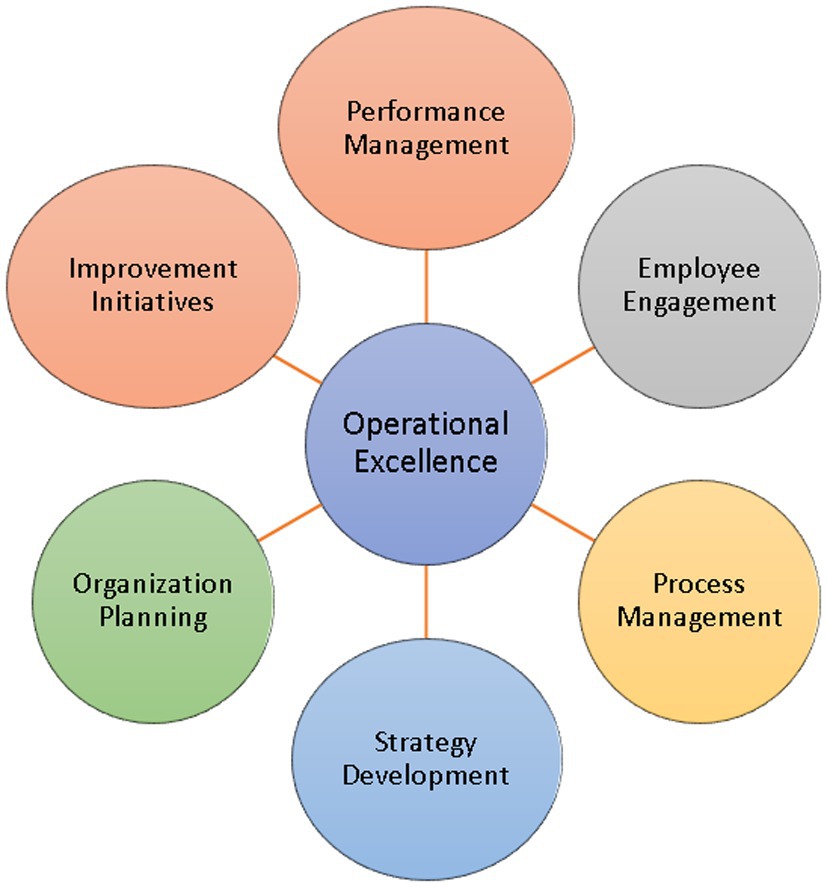Strategic Operational Transformation: Driving Sustainable Growth Through Lean Systems and Intelligent Workflows
 Srinivas Kalyan Yellanki
Srinivas Kalyan Yellanki
In the face of rapidly shifting market dynamics, technological disruption, and rising stakeholder expectations, organizations are compelled to evolve beyond traditional operating models. Strategic Operational Transformation (SOT) emerges as a crucial approach to not only enhance performance but also ensure long-term, sustainable growth. By leveraging lean systems and intelligent workflows, businesses can create agile, resilient, and customer-centric operations that deliver consistent value while optimizing resource use.
Understanding Strategic Operational Transformation
Strategic Operational Transformation refers to the holistic and intentional redesign of an organization's processes, technologies, and culture to align with long-term strategic objectives. Unlike incremental improvements, SOT involves fundamental changes in how value is created and delivered. It cuts across departments, functions, and geographies, requiring cross-functional collaboration, leadership buy-in, and data-driven decision-making.
At its core, SOT is not just about cost-cutting or efficiency—it is about reimagining operations to be proactive, adaptive, and continuously evolving in alignment with corporate strategy. Organizations undergoing successful transformation typically exhibit improvements in innovation speed, service quality, operational costs, and customer satisfaction.
Lean Systems: The Foundation of Efficiency
Lean systems, rooted in the Toyota Production System, focus on eliminating waste, improving flow, and maximizing customer value with the minimum necessary resources. The principles of lean thinking—such as value stream mapping, just-in-time production, and continuous improvement (Kaizen)—form the bedrock of any effective operational transformation.
By adopting lean systems, organizations can identify non-value-adding activities and redesign workflows for efficiency. For example, in manufacturing, lean practices reduce overproduction, inventory costs, and process delays. In service sectors, lean enables faster customer response times and better resource allocation.
EQ.1.Overall Equipment Effectiveness (OEE)

Moreover, lean systems create a culture of continuous improvement, where employees at all levels are empowered to contribute ideas for operational enhancements. This cultural shift is critical for sustaining transformation efforts beyond initial implementation phases.
Intelligent Workflows: Driving Agility and Insight
While lean provides the framework for process efficiency, intelligent workflows add the layer of adaptability and data-driven intelligence necessary for today’s volatile business environment. Intelligent workflows are digitized, automated, and augmented by advanced technologies such as artificial intelligence (AI), machine learning (ML), robotic process automation (RPA), and Internet of Things (IoT).

These technologies enable dynamic decision-making, real-time monitoring, and end-to-end visibility across the value chain. For instance, AI-powered demand forecasting tools can automatically adjust inventory levels, while RPA bots can handle routine administrative tasks, freeing up human workers for more strategic roles.
Importantly, intelligent workflows foster agility. In a rapidly changing market, being able to pivot operations in response to customer feedback, supply chain disruptions, or competitive threats is a significant strategic advantage. Intelligent workflows also enhance collaboration across departments through shared data platforms, improving transparency and accountability.
Integration of Lean and Intelligent Systems
The integration of lean systems with intelligent workflows creates a synergistic effect—lean streamlines operations, and intelligent workflows enable smarter, faster decisions. Together, they enable organizations to not just optimize existing processes but also innovate and scale sustainably.
For example, a healthcare provider might use lean principles to reduce patient wait times while implementing AI-driven scheduling to better manage staff resources and patient flow. A logistics company could combine lean delivery routes with IoT-enabled tracking to improve delivery accuracy and reduce fuel consumption.
The key to successful integration lies in aligning technology investments with lean process redesigns, ensuring that automation enhances rather than complicates workflows. Additionally, organizations must invest in change management and upskilling initiatives to prepare employees for the digital and lean-enabled workplace.
EQ.2.Process Cycle Efficiency (PCE)

Benefits of Strategic Operational Transformation
When effectively executed, SOT offers multifaceted benefits that contribute to sustainable growth:
Cost Reduction and Efficiency: Streamlined processes and reduced waste directly lower operational costs.
Enhanced Customer Experience: Faster, more reliable services improve customer satisfaction and retention.
Agility and Responsiveness: Intelligent systems enable organizations to respond quickly to changes and capitalize on new opportunities.
Innovation Enablement: Freed-up resources and real-time insights create space for strategic innovation.
Sustainability and Compliance: Lean and intelligent practices support sustainability goals through reduced energy consumption, optimized logistics, and improved regulatory compliance.
Challenges and Considerations
Despite the clear benefits, strategic operational transformation is not without challenges. Resistance to change, legacy systems, data silos, and lack of skilled talent can hinder progress. A common pitfall is the overreliance on technology without aligning it to clearly defined business objectives or operational redesigns.
To overcome these challenges, organizations must adopt a phased, scalable approach to transformation. Leadership commitment, a clear transformation roadmap, continuous stakeholder engagement, and robust performance metrics are essential to driving accountability and measuring success.

Conclusion
Strategic Operational Transformation, enabled by the convergence of lean systems and intelligent workflows, is no longer a luxury but a necessity for sustainable growth. In an era defined by complexity and uncertainty, organizations that embrace operational agility, data-driven decision-making, and continuous improvement will be best positioned to thrive. By aligning people, processes, and technology with long-term strategy, SOT becomes a powerful engine for enduring success.
Subscribe to my newsletter
Read articles from Srinivas Kalyan Yellanki directly inside your inbox. Subscribe to the newsletter, and don't miss out.
Written by
